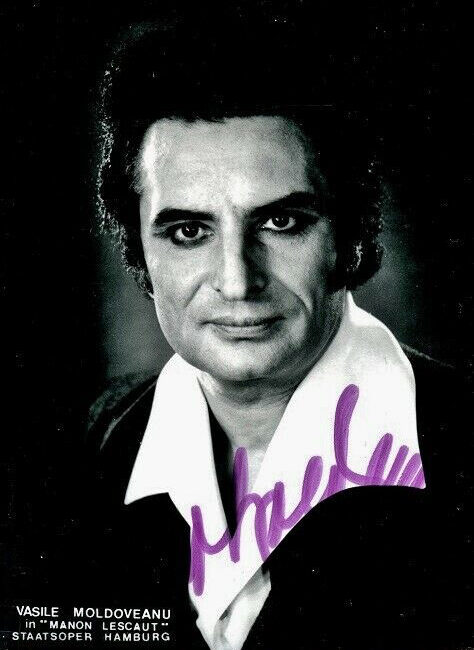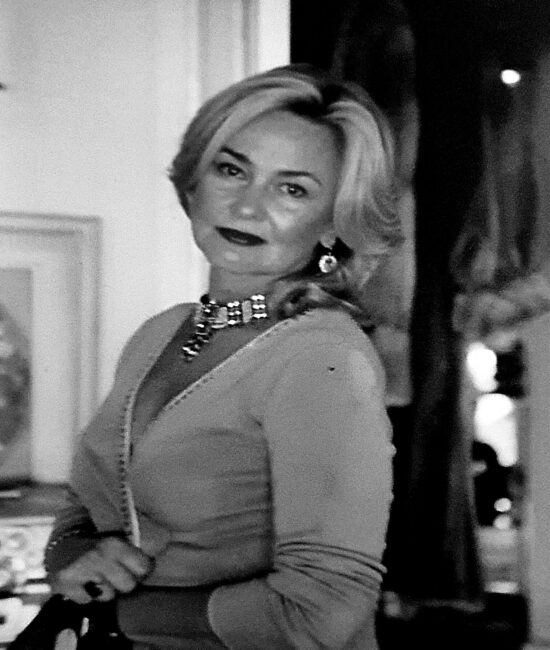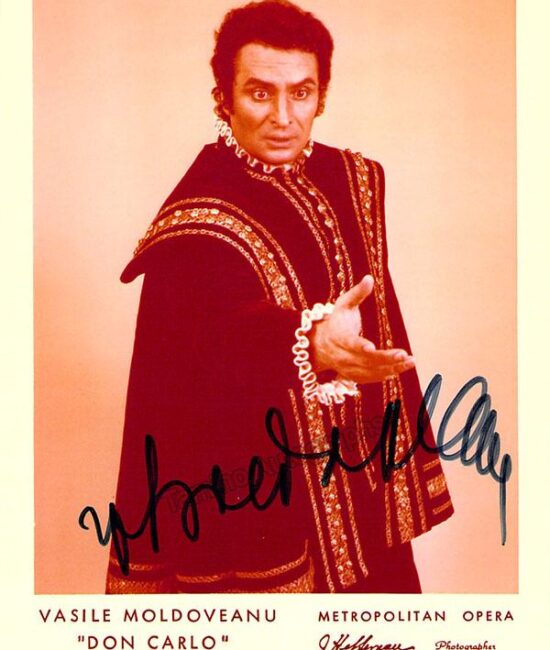The Tenor’s Wife
inspired from real events
A BIOGRAPHY/DRAMA/THRILLER FEATURE FILM
Based on
Maria Margareta Babeanu Moldoveanu’s book, “Aluca, The Tenor’s Wife”
Screenplay by
Cosmin P. Zaharia
Margareta Maria Babeanu Moldoveanu

Synopsis
The Tenor’s Wife is a biography/drama/thriller film, inspired from real life events and Maria Margareta Babeanu’s book, “Aluca, The Tenor’s Wife”. The story reveals the adventures of the vibrant and exciting life of the world-famous tenor Vasile Moldoveanu and his wife, the prima ballerina, Aluca Moldoveanu, the daughter of Count Nicolae Babeanu and Adelaide Babeanu, a baroness from Poland.
The action begins with Aluca’s birth in the post-war Romanian society. The end of the Second World War meant, for Romania, the beginning of the disaster. Abandoned by the great powers under the discretionary Russian boot, torn from the outside by plucking some territories, the country would be destroyed from within by the “seeds of the sunrise”. Supported by the Soviet regime, the new power confiscates, like an incurable cancer, the lands of wealthy families, achieved through their honest work.
In this climate, the story develops and speaks about Aluca’s childhood paradise in the Cozia Mountains with her beloved father, his persecution during Gheorghe Doja’s regime and his lung illness during her adolescence. When Aluca is only a few years old, she watches horrified the abusive arrest of her father by the communists. The lands and a big part of the house are confiscated. They are given only 2 rooms from the old house. Adelaide Babeanu and her two children are forced to move to Bucharest. There they will live in poor conditions, almost without seeing the sun, in a basement provided by the goodwill of the communist party. Its windows open directly to the rats playground.
By chance, Aluca discovers ballet at the dawn of her adolescence. This becomes for her the second dictatorship, after communism. Her ballet master tells her: “If I ever saw you gazing at a man once more, I’ll never give you ballet private lessons again. Am I clear?”
Young and restless, she ignores her master’s advice. Aluca falls in love and marries a young talented handsome tenor, Vasile Moldoveanu. Except the fact she found her life partner, life is not easy on her. Her parents’ divorce followed by her father’s death, the permanent persecution of the communists after her mother’s departure to Munich with Baron von Kapri, her brother’s greed and malice, are factors that make her take the decision of leaving the country, with the risk of being sentenced to death.
Shortly after, Vasile follows her. Arriving at Munich, they pass the border between communism and capitalism. The young couple discovers the communist ideology is a big lie built upon terror and fear, personified by Mr. Munteanu. He’s the one giving Aluca the passport in exchange of her services for the communist party. She agrees with him to provide information about the Romanians over the borders. She never keeps her promise and their international chase starts.
Vasile is not an ordinary tenor. He achieves worldwide celebrity in a noticeably short time with his exceptional voice. After Vasile’s first concert in Regensburg, Aluca can listen to her husband’s voice on the most important stages of the world: from Stuttgart Opera to New York Metropolitan Opera, from London Royal Opera House to Monte Carlo Opera, from Paris Bastille Opéra to Denver Ellie Caulkins Opera House and many other world-famous venues in the world.Her husband, Vasile Moldoveanu, ends up singing with Renata Scotto and Joan Sutherland, under the direction of James Levine, Roman Polanski and many other prominent names.
The dream of the two young men to conquer the world comes true. Their life changes completely. She gives birth to a beautiful child, they move their residence to Monaco, buy apartments to New York and Switzerland. Vasile’s success opens the gates of famous and rich people’s world for them.
Unfortunately, their happiness is chased constantly by the communist threat and other negative events: Vasile is condemned to death in his absence under the accusation of country betrayal; Romanian spies are being sent after them several times, to be brought back to their native country and punished; phone and physical threats become regular in their successful life; Vasile gets ill and has a serious surgery; all family members are involved in a serious car accident in New York; Aluca and Vasile have several altercations ending up at the police station.
After communism falls in Romania and the main threat disappears, they do not have enough energy to save their marriage and their love story ends up with a divorce. This change puts an end to Vasile’s career.
The last lines of the script describe Aluca releasing her first and only book, inspired from her own spectacular life. Also, in the end we find out that Vasile’s death sentence was canceled, and he is free again to come to his home country.
Director’s vision




The theme of this movie is unconditional love, both for people and art, as well as the woman’s inportance in the family and society.
It’s a story about a woman who sacrifices everything for her family and her husband’s success. Her true love and support, as a devoted wife, and her husband’s borderless passion for music change their destiny forever. It’s a life lesson for every person who dares to dream. This is not a simple biography film or documentary. It’s a biography/drama/thriller of a great complexity targetting all categories of people. It will bring something to learn for everyone who will watch it.
The opening scene of the film, acting as a prologue, starts with large establishing shots of Monaco bathed in warm light. It’s a dreamy atmosphere. Then the large shot restrains to a close up shot on Aluca’s hand, inside the house. On the background it’s playing La Boheme. A bird’s eye view shot reveals the frozen static landscape of the second scene. The blue cold light of the dawn reflects on the snow. Insert shots of the orange red flickering flames of the gas lanterns, frozen windows and icicles are taken. The silence is broken by the loud noise of the engine and sirenes. Close-up shots, extreme close-up shots, insert shots, tracking shots, crane shots, POV shots and hand held camera technique bring the movie to life.
In the third scene, close-up and insert shots are used to reveal the architecture of the postwar era’s buildings. The cold blue/violet colour of the exterior is the antithesis of the warm happy interior’s atmosphere. Inside the house there’s an explosion of warm colours: orange, red and yellow combined with the metalic gold, silver and copper. In a single take, the camera will flow from the exterior of the house to the interior, revealing the characters one by one. During the filming, the practical light of the candles and gas lanterns solely will be used whenever is possible, without the use of artificial light sources. On the background, it will play a fast (molto vivace) strings classical music.
The first Russians’ return scene will be filmed in the evening, during the golden hour. The peaceful atmosphere is a premonition for the inevitable. Camera movement will pass smoothly from one action to another until the Russian’s arrival news is received. That’s the moment when the action’s rhythm will change completely. A mixture of handheld camera tracking shots, POV shots, extreme close-up shots, insert shots, close-up shots and dynamic crane/drone shots to create tension and dynamism will be used. For the close ups I’ll use wide-angle prime lenses(14-20mm) to give actors and scenes a sense of surreal distortion and make them disgraceful. Also 35 mm and 50 mm lenses will be used to highlight the realism of the scenes. After Russians arrival, the light will be dimmed to the minimum. The atmosphere will become very heavy. Chiaroscuro lighting or side cinematography lighting will be obtained using a strong contrast and a low-key to accentuate subjects contours. A big attention will be paid to mise-en-scène elements such as framing, composition, camera movements, actors, sets, props.
The characters will often change their positions within the frame creating an action interesting to watch. The editing of this scene will be very dynamic. The same shooting style will be used especially for Nicolae Babeanu’s arresting scene, confiscation scene, volwes attack scene, Vasile and Aluca’s robbery scene. The rhythm of the action and energy of the scene will be strengthened by a very powerful and intense piece of classical music.
I started with a description of the first scenes to give a direct feeling of my directing’s style.
During the filming process, I will use ambient and practical lighting, where the conditions allow that. The camera movement will flow from one location another, from one character to another or from one action to another using one shot filming style, whenever the scenes require. My aim is to create fluidity that will match the harmony of the classical music style. The audience will be given time to absorb the beautiful visual information of each landscape. The scenes will be shot at the original location. I will try to avoid, whenever is possible, the usage of green, blue screen or studio filming. In my opinion, the original location brings authenticity to each scene even if the costs of the production are much higher.
The characters portrayed in this film are realistic inspired from real people’s life. My aim is to rehearse with the actors until they become one and the same person with the character they are portraying. This was my philosophy for my previous film and this will be my directing approach for this film too. The action takes place between 1944 and 2010, both in socialist and capitalist countries. The contrast will be very obvious. I am gonna capture this, through descriptive shots, characters behavior, education, social status, clothes, reactions, mentality and actions.
This movie will not be a minimalistic one. This movie will recreate the world of those times until the smallest detail. I want people from that generation to feel they live once more that period when they watch this movie. I intend to use all my resources for that. Because the characters of this movie are known people, my work with the actors will be extremely ellaborate in order to portray the real people’s character and behavior.
The Tenor’s Wife will not be only for art lovers and people who lived those times. Directing style will be very engaging and interesting to watch, targeting also thriller and action movie lovers. The espionage topic will bring the movie a thriller’s signature. Dramatic moments will be combined with comedy, descriptive shots will be combined with dynamic ones, slow rhythm of some actions will be balanced by the fast rhythm of other actions. In other words, the movie will be an emotional inspiring rollercoaster full of powerful messages engaging all categories of people.
Even if this movie is related to a very famous tenor and ballerina, I will not direct it after the musical movie style. Metaphorically speaking, it will be like planting seeds of opera music, interpreted by Vasile Moldoveanu and other famous opera singers, in the ground of the real facts of everyday’s life and social environment. That’s why fluidity is the characteristic word for this film. Many times, the passing from stage action to real life action will be unnoticed. It will be a subtle border between the opera shows, played on the stage, and the real life events. I choose this approach because an artist’s life doesn’t end up once he steps out of the stage.
Even though I am not gonna use a musical’s directing style, the music will play an extraordinary important role in the making of this movie. The moments of silence combined with the moments of opera music or other music composition will enhance the feeling of how this movie, action and messages are perceived. The soundtrack, except for the known opera arias, will be mainly inspired from classical music even though I might also use mainstream music of those specific times.
In the scenes recalling the famous opera shows, I will try to remake, as much as possible, the original set up of the stage. I will research intensively about every detail of those specific opera shows, from set design to actors. I will work very close to the production designer and director of photography. Even if the characters will play the roles in the opera scene, I do not want the audience to just watch the actors singing. My aim is to create a second dimension through the handheld camera technique, single takes and POV shots. This way, I introduce character’s awareness element. Even if you are or you are not an opera lover, you will be immersed in the characters’ action protraying the opera roles.
In conclusion, I choose to do this film for the complexity of it. It’s a mosaic between a real life story, worth to be known, exceptional opera music played in the greatest venues of the world, great complexity characters, interesting life situations, subliminal and direct messages, multidimensional character of the action, beautiful imagery, extraordinary locations, 70 years long action’s period, big diversity of social environments, concept of theatre in film, the artistic dimension and unlimited creative potential.
It’s the unique life story of one of the biggest Romanian tenors of all times, that left the country together with his wife, eventually sentenced to death for treason. His enormous success on the most famous stages of the planet is the quintessence of this film production, obliging to reflection, meditation and to ask ourselves the following questions: How does the environment influence the professional development of the person? How important are contemporary national values and models fed with superficiality and scandal? How does love succeed to break limits, borders and imminent danger and what is the impact of such a life story upon young generations? Why is an exceptional artist recognized and appreciated worldwide and at the same time he is a niche topic or a personality strictly known in the cultural and intelectual environment of his country?
Without a „pro-” or „con-attitude”, we wish to highlight the exiled’s genius condition which affected a whole series of Romanian personalities, and the big tenor Vasile Moldoveanu is one of them. We pull an alarm signal for the young generation or the non-elitist one about the incontestable value the great tenor brought it to his country, without the native country’s direct support and the artist’s condition in the society.
The proposed director’s vision reffers to my trial of delivering a niche topic in a commercial manner without excluding the intelectual, artistic and phylosophical component in order to give everyone access to information and to educate the cultural taste of the young generations.
It’s all a director could ever want in order to do an exceptional film worthy to be remembered.
For sponsorship opportunities please contact:
Email: [email protected]
RO: +40756545902
UK: +447414541105
FR: +33629542830